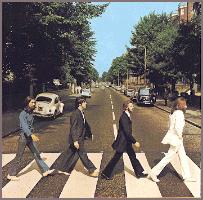In 1989 the American musicologist Alan W. Pollack started to analyze the songs of the Beatles. He published his first results on internet. In 1991 — after he had finished the work on 28 songs — he bravely decided to do the whole lot of them. About ten years later, in 2000 he completed the analysis of the official Beatles’ canon, consisting of 187 songs and 25 covers. Now the journal on media culture soundscapes.info have ordered this massive work in five categories. And, for your convenience, they have added an alphabetical, a canonical and a chronological index as well as a short introduction.
You can find all materials here.
The work is beautiful and very accurate. For each song Pollack analyze the structure, the style, form, melody, harmony and arrangement. A detailed section-by-section walkthrough follows. This is a very important resource for every people interested in popular music.
Nel 1989 il musicologo americano Alan W. Pollack ha iniziato la sua analisi delle canzoni dei Beatles, pubblicando i risultati in internet.
Nel 1991, dopo aver terminato le prime 28 canzoni, ha deciso, coraggiosamente, di continuare. 10 anni dopo, nel 2000, ha completato l’analisi dell’intero corpus ufficiale delle canzoni dei Beatles che consiste di 187 pezzi e 25 cover. Ora la rivista soundscapes.info ha riorganizzato il grande lavoro di Pollack e creato degli indici (alfabetico, cronologico e canonico). Il tutto è liberamente consultabile in rete qui.
Il lavoro è notevole. Per ogni canzone Pollack esamina la struttura generale del pezzo soffermandosi poi su stile, forma, melodia, armonia e arrangiamento. Segue poi una analisi dettagliata sezione per sezione. Una risorsa imperdibile per un cultore di popular music.

